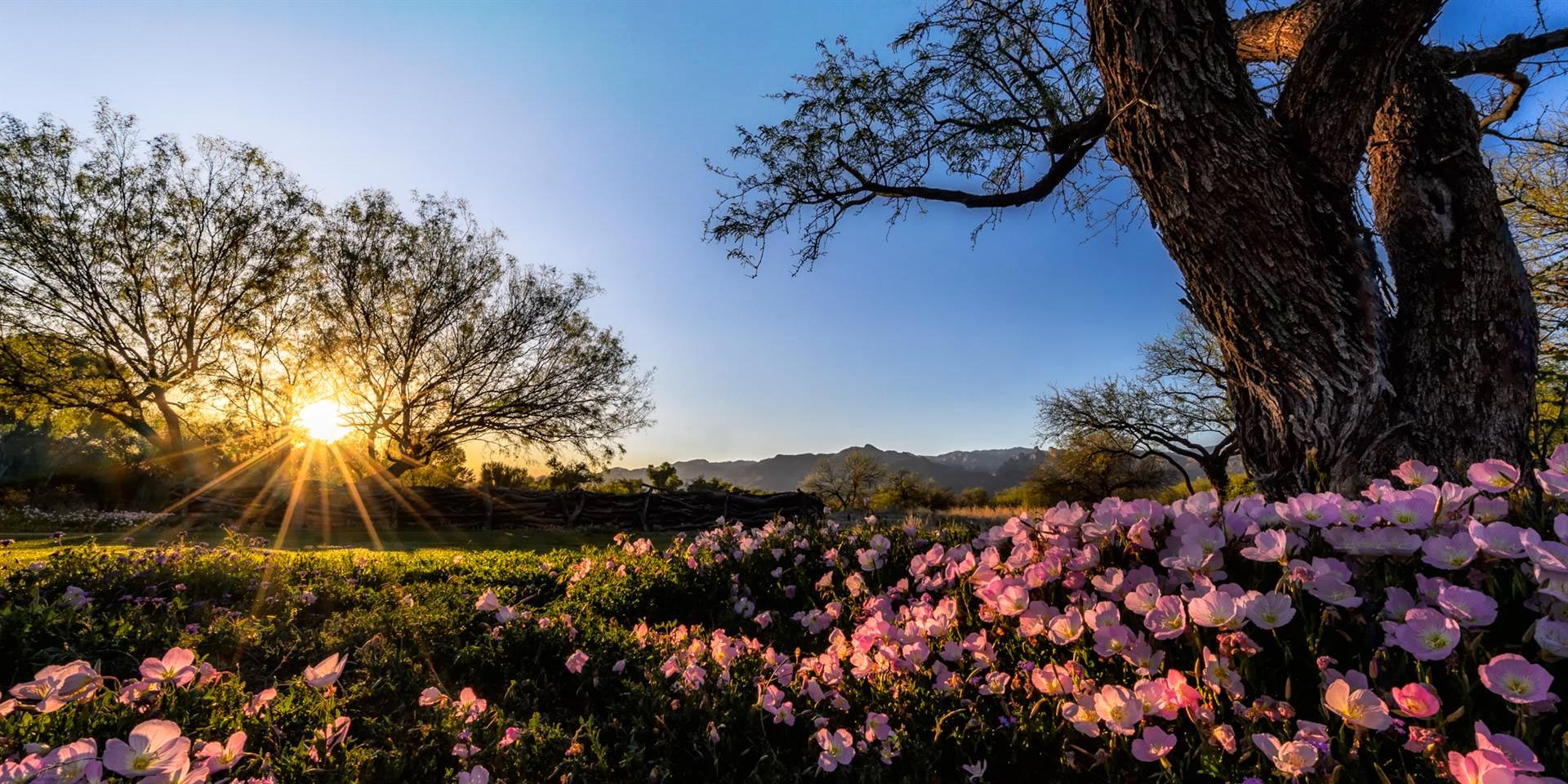Plant Profile: Desert Ironwood
Posted May 31, 2021
Guardian of the Desert
By Kathleen M. McCoy, Master Naturalist, AZNPS Phoenix Chapter Member
What thorny, long lived, slow-growing giant can nurture a wide range of plants, provide roosts for birds, and produce protein-rich seeds for animals? The Desert ironwood (Olneya tesota) can do all the above and more!
A member of the Leguminosae family, Desert ironwood’s natural boundaries correspond closely with those of the Sonoran Desert. Additional names for this endemic tree within the U.S./Mexico borderlands include Ironwood, Palo Fierro, and Palo de Hierro, and Tèsota.
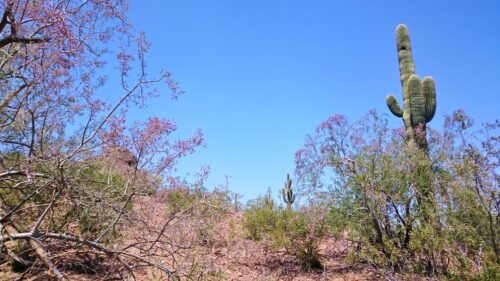
Commonly found in washes and hillside drainages, Ironwoods thrive in warm areas below 3,000 feet. The Ironwood Forest National Monument, located 25 miles northwest of Tucson, was established in June 2000 and provides protection for one of the richest areas of Ironwood trees.
Ironwood trees strongly influence the distribution and quantity of hundreds of wildlife species by functioning as a “nurse plant” and a “keystone species.” Canopies of mature trees provide microenvironments advantageous to understory plants, with winter temperatures several degrees warmer than open areas. In addition to protecting seeds and seedlings from extreme cold, Ironwoods also provide safety from radiation and predation.
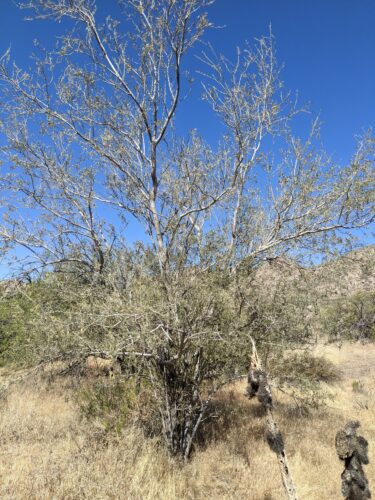
The perennial Ironwood can remain as a many stemmed, 6-feet high spiny shrub, or erect and spreading with a low canopy with a thick trunk reaching 30 feet or more. This semi-deciduous native tree is covered with grayish-green leaves that endlessly drop and regrow throughout the year. At the base of each leaf are excruciatingly sharp, slightly curved paired spines. The piercing thorns and low canopy protect small reptiles and desert mammals from larger prey and provide forage, cover, and nesting sites.
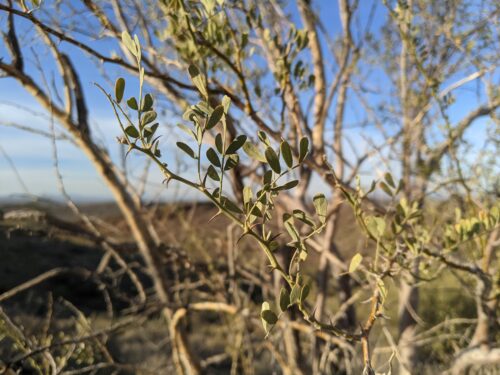
As one of the tallest trees in the desert scrub, with a potential life span of 800 years, its canopy is used by nearly 150 bird species. Local and migrating birds, such as endangered cactus ferruginous pygmy-owls, build nests in Ironwoods. Hawks and owls often use bare branches as perches and roosts.
In April and May, small pale lavender or purple flowers blanket the tree, but only for about two weeks. Ironwood flowers and fruit may occur in most years, but are abundant only four years per decade. Native bees are commonly attracted to the flowers. After pollination, ironwoods produce slightly curved, knobby pods containing up to eight shiny dark brown hard-shelled seeds. These are an important food source for native fauna in early summer.
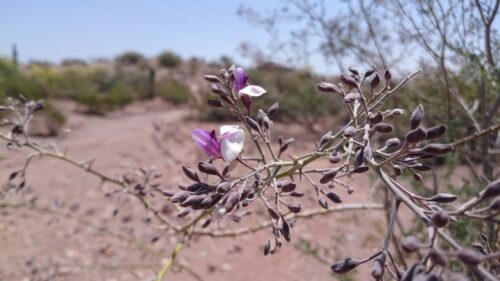
The Ironwood is also beneficial to humans and was widely used as food by the Cahuilla, Mohave, Papago, Pima, and Seri indigenous people. The peanut or soy flavored seeds were eaten either raw, dry roasted, or ground for flour. Roasted seeds have been used as a substitute for coffee beans.
The tree’s wood has social and economic impact as well. The name “Ironwood” refers to the hard, heavy heartwood so dense it cannot float. The trunk is highly resistant to rotting, and may remain intact up to 1600 years. Wood was used for fuel, as well as for making various kinds of tools and implements like digging sticks and shovels. Ironwood also added to the aesthetic of daily life by providing wood for weaving frames, musical instruments, and the beautiful carvings of the Seri.
Photo credits: Lisa Rivera
Sources:
Arizona-Sonora Desert Museum. (n.d.). Biological survey of Ironwood Forest National Monument. https://www.desertmuseum.org/programs/ifnm_ironwoodtree.php
Bureau of Land Management. (2021). Ironwood Forest National Monument. https://www.blm.gov/visit/ironwood
Marshall, C. (2018). Why is ironwood so heavy? Woodworkers Journal. https://www.woodworkersjournal.com/why-is-ironwood-so-heavy
Rymer, C. (2003). The ironwood: stately sanctuary in the Sonoran Desert. Master Gardener Journal. https://cals.arizona.edu/maricopa/garden/html/pubs/0803/ironwood.html#
Southwest Desert Flora. (2017). Olneya tesota, Desert ironwood. http://southwestdesertflora.com/WebsiteFolders/All_Species/Fabaceae/Olneya%20tesota,%20Desert%20Ironwood.html

